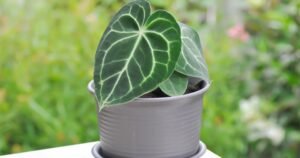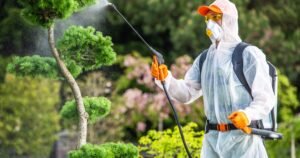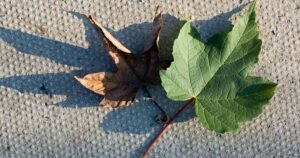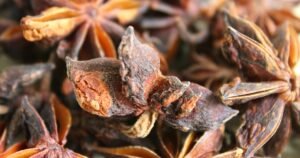Do you have a question: What Grows in the Dark? Then, Plants that grow in the dark.
- Aglaonema
- Philodendron
- Snake plant
- Peace lily
- Dracaena
- Aspidistra elatior
- Chlorophytum comosum
- ZZ plant
- Dumb canes
In the realm of darkness, a world unseen by the naked eye comes alive. Fungi, molds, and various types of mushrooms thrive in the absence of light, decomposing organic matter and thus playing a vital role in the nutrient cycle.
Many species of fish and marine life adapt to the impenetrable darkness of the ocean depths, developing unique features to navigate their surroundings. In the plant kingdom, root vegetables like carrots, beets, and potatoes grow almost entirely in the dark, enriching our diets with their dense nutrient content.
Introduction
The world of plants is a vast and diverse one, showcasing a fascinating array of adaptations to various environmental conditions.
While most plants thrive in well-lit environments, certain species have evolved to grow and thrive in low light or even complete darkness.
In this article, we will explore the intriguing world of plants that grow in the dark, understanding their unique characteristics, adaptations, and the mechanisms that enable their growth and survival.

The Hidden Life of Mycelium
Mycelium, the vegetative part of the fungi family, is an underrated hero of the dark, thriving best in the obscured, damp corners of the world.
These fungal networks, often hidden beneath the soil surface, are integral to the health of ecosystems due to their critical role in decomposition and nutrient cycling.
Mycelium breaks down dead organic material, transforming it into nutrients that can be absorbed by plants, thus playing an essential role in maintaining soil fertility.
Furthermore, the mycelial networks can extend vast distances, acting as a ‘Wood Wide Web,’ facilitating communication and nutrient exchange between plants and contributing to the resilience and sustainability of ecosystems.
Plant Life in the Ocean Depths
In the darkest depths of the ocean, where sunlight fails to penetrate, a diverse array of unique plant species exist. These often overlooked species have adapted to survive in harsh conditions, such as extreme pressure, cold temperatures, and darkness.
Seaweeds, like kelp, although not technically classified as plants, perform photosynthesis like their terrestrial counterparts.
Yet, they have adapted to thrive in the low-light conditions found in the ocean’s deeper waters.
These organisms form dense underwater forests, playing a pivotal role in the marine ecosystem by providing food and shelter to various marine species.
Another remarkable life form is deep-sea seagrasses, which have evolved to photosynthesize with minimal light, using mechanisms that we are only beginning to understand.
These species, despite flourishing in conditions vastly different from their terrestrial counterparts, continue to contribute significantly to the biodiversity and stability of marine ecosystems.

The Unique Challenge of Low Light Environments
Inadequate Light for Photosynthesis:
- Main Point: Low light or darkness limits the availability of light energy crucial for photosynthesis, a fundamental process for plant growth.
- Photosynthesis is the mechanism through which plants convert light, water, and carbon dioxide into energy.
Adaptations to Compensate for Low Light:
- Main Point: Plants that grow in low light have specific adaptations to make the most of the limited light available.
- These adaptations help optimize light absorption, energy utilization, and survival in such challenging environments.
Types of Plants that Grow in the Dark
Epiphytes:
- Main Point: Epiphytes are plants that grow on other plants or structures but are not parasitic. Many epiphytes, such as certain ferns, mosses, and orchids, are adapted to grow in the shaded, low-light regions of forests.
Understory Plants:
- Main Point: Understory plants are those that grow beneath the canopy of taller trees, receiving filtered or diffused light. They have adaptations to thrive in these low light conditions, making the most of the limited light available.
Cave Plants:
- Main Point: Plants that grow in caves or dark, underground environments are specifically adapted to complete darkness. These plants often lack chlorophyll and have unique mechanisms to obtain nutrients and survive without photosynthesis.

Unique Adaptations of Plants that Grow in the Dark
Enhanced Light Sensitivity:
- Main Point: Plants in low light conditions have increased sensitivity to light. They possess specialized light receptors and photoreceptors that allow them to detect and utilize even the smallest amounts of available light for photosynthesis.
Efficient Use of Light:
- Main Point: Plants in low-light environments are highly efficient in utilizing the light they receive. They have evolved mechanisms to capture and absorb light effectively, ensuring maximum utilization for photosynthesis and growth.
Reduced Energy Needs:
- Main Point: Plants in low-light conditions often have reduced metabolic rates and lower energy requirements compared to those in well-lit environments. This allows them to sustain themselves with minimal light energy.
Strategies for Survival and Growth in Darkness
Heterotrophy:
- Main Point: Some plants in low light conditions resort to heterotrophic nutrition, where they derive nutrients by parasitizing other plants or through symbiotic relationships, as they are unable to produce sufficient nutrients through photosynthesis.
Mycotrophy:
- Main Point: Certain plants form mutualistic relationships with fungi, known as mycotrophy. These plants rely on fungi for nutrients, especially in low-light environments where photosynthesis is limited.
Storage of Nutrients:
- Main Point: Plants adapted to grow in darkness often have specialized structures to store nutrients efficiently. These structures help sustain the plant during periods of limited light and nutrient availability.
Examples of Plants That Grow in the Dark
Ferns:
- Main Point: Ferns are common in low-light environments such as the forest understory. They have adapted to capture and utilize the limited light available for growth efficiently.
Mosses:
- Main Point: Mosses are well-adapted to grow in low light conditions, often found in shady, damp areas. They have a high tolerance for low light levels.
Indian Pipe (Monotropa uniflora):
- Main Point: Indian Pipe is a unique, non-photosynthetic plant that grows in dark environments. It relies on mycotrophic nutrition, forming relationships with fungi for nutrients.
Importance of Plants That Grow in the Dark
Ecosystem Health:
- Main Point: Plants that grow in the dark play a vital role in maintaining ecosystem health. They contribute to nutrient cycling and soil structure and provide habitat and food for various organisms.
Biodiversity:
- Main Point: The presence of plants adapted to low-light environments enriches biodiversity, ensuring a diverse range of flora and fauna within an ecosystem.
Conclusion
What Grows in the Dark? The existence and growth of plants in low light or complete darkness exemplify the incredible adaptability and diversity of the plant kingdom. These plants have evolved unique adaptations to thrive in environments where light is limited. Understanding their adaptations and the significance of their presence in ecosystems contributes to a deeper appreciation of the marvels of nature. Plants that grow in the dark enrich our understanding of plant life and the extraordinary ways in which plants have evolved to survive and flourish in diverse and challenging environments.
FAQs
What plants can be grown in the dark?
While no plant can grow in complete darkness, some grow in the dark, like the ZZ Plant (Zamioculcas zamiifolia) and Snake Plant (Sansevieria trifasciata), can tolerate very low light conditions. These plants are great options for indoor gardening in spaces with minimal natural light. Other low-light tolerant plants include Pothos (Epipremnum aureum), Peace Lily (Spathiphyllum), and English Ivy (Hedera helix).
Can anything grow in the dark?
While most organisms require some level of light for growth, grows in the dark certain fungi and bacteria can grow in complete darkness. These organisms are often found in caves, deep-sea environments, and soil. Their ability to thrive in darkness is due to unique metabolic processes that don’t rely on light for energy production, unlike photosynthesis in plants.
What plant grows best in the darkness?
The Maidenhair Fern (Adiantum) is one plant species that thrives in low light conditions. Grows in the dar.k It flourishes in the understory of forests, utilizing the faint light filtering through the leaf canopy above. This fern’s delicate, lace-like leaves are a testament to its adaptability and resilience in environments where sunlight is scarce.
What grows in the night?
Certain plants, known as night bloomers, grow and bloom predominantly at night. These include species like the Moonflower (Ipomoea alba) and Queen of the Night (Selenicereus grandiflorus), both of which unfurl their blossoms in the evening. Night-blooming plants have evolved this behavior to attract nocturnal pollinators such as moths and bats, capitalizing on a unique ecological niche.











